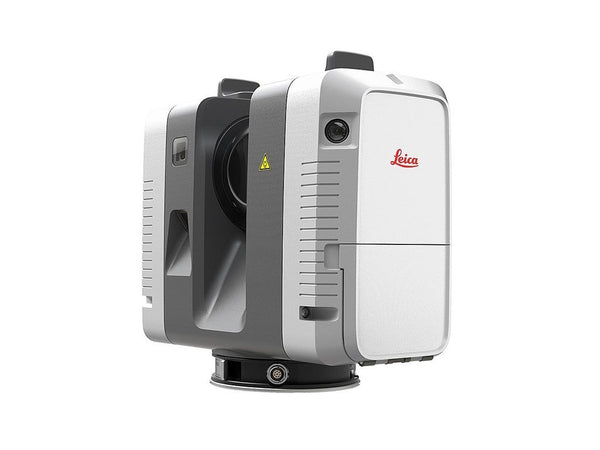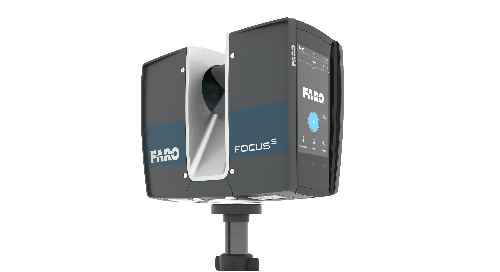What You Need to Know About 3D Scanning for Projects
Enhancing Manufacturing Processes: The Influence of 3D Laser Scanning on Top Quality Control
3D laser scanning innovation is transforming quality assurance in manufacturing. By providing high-resolution information and accurate measurements, it allows makers to determine variances from specifications with ease. This improvement not only streamlines examination processes but additionally boosts operational performance. 3D Scanning. However, the implementation of this innovation comes with its own set of difficulties. Checking out these facets discloses the more comprehensive implications for markets and the future landscape of production

Recognizing 3D Laser Scanning Innovation
3D laser scanning innovation has advanced considerably in recent years, its basic concept remains simple: catching the exact geometry of things using laser light beams. This technology uses laser light to gauge ranges in between the scanner and different points on a things's surface area. The information collected is then refined to produce a comprehensive 3D model, precisely mirroring the measurements and contours of the scanned things.
Usually, 3D laser scanners can be categorized right into two main kinds: get in touch with and non-contact scanners. Call scanners literally touch the item to collect dimensions, whereas non-contact scanners utilize laser light beams to catch information from a distance. The versatility of this technology allows its application across various industries, consisting of style, production, and construction. Its capability to produce high-resolution designs promotes top quality control, reverse engineering, and rapid prototyping, inevitably improving layout precision and performance in manufacturing procedures.
Benefits of 3D Laser Scanning in Manufacturing
As manufacturers look for to boost effectiveness and precision in their procedures, the benefits of 3D laser scanning have actually ended up being significantly obvious. This ingenious technology allows for rapid and very precise measurements of intricate geometries, substantially reducing the time required for high quality checks. By capturing in-depth data, manufacturers can recognize inconsistencies early in the manufacturing procedure, consequently decreasing waste and remodel expenses.
3D laser scanning assists in much better layout validation, making it possible for designers to compare as-built problems with original requirements. This ability ensures that any type of deviations are promptly dealt with, improving total product high quality. Additionally, the innovation supports the production of digital twins, which can be utilized for simulations and procedure optimizations. Because of this, producers not just enhance their operational performance however also boost their affordable advantage in the marketplace. Generally, the combination of 3D laser scanning stands for a transformative action towards accomplishing greater criteria in making quality assurance.
Integration of 3D Laser Scanning Into Top Quality Control
Integrating 3D laser scanning into quality assurance processes improves the precision and efficiency of assessments throughout production. This innovation makes it possible for manufacturers to record comprehensive, high-resolution data of assemblies and elements, permitting exact measurements and contrasts against design specifications. By utilizing 3D laser scanning, organizations can identify deviations from tolerances much more successfully, which is crucial for keeping product honesty.

Real-World Applications and Study
Real-world applications of 3D laser scanning in manufacturing demonstrate its transformative effect throughout various sectors. For example, aerospace companies use this innovation to carry out exact examinations of elements, ensuring they fulfill strict security requirements. A remarkable case involved a leading aircraft producer that used 3D laser scanning to improve its top quality control procedures, substantially decreasing examination times and errors.
In the auto sector, makers have actually applied laser scanning to create digital twins of their cars, making it possible for real-time modifications throughout production. One vehicle firm reported a 30% decrease in rework costs after integrating this technology into their setting up lines.
In the customer items industry, companies are using 3D laser scanning for quick Click Here prototyping, enabling for quicker iterations and boosted product styles. These applications highlight exactly how 3D laser scanning not just enhances precision however likewise improves performance and development throughout multiple manufacturing domains.
Overcoming Challenges in Execution
Applying 3D laser scanning in producing presents numerous obstacles that organizations should navigate to fully understand its benefits. One substantial hurdle is the initial price of tools and software, which can hinder business from adopting this modern technology. Additionally, incorporating 3D laser scanning right into existing process needs getting over resistance to change amongst workers, demanding thorough training programs to assure efficiency. Data administration likewise poses an obstacle, as the high quantity of information created by 3D scanning need to be successfully processed and examined to obtain actionable insights. Additionally, compatibility issues with tradition systems may impede smooth integration, requiring potential upgrades or adjustments. Dealing with these challenges is necessary for makers aiming to enhance top quality control and maximize manufacturing procedures. By establishing clear approaches for training, investment, and data management, companies can alleviate these barriers and launch the transformative capacity of 3D laser scanning in their procedures.
Future Fads in 3D Laser Scanning for Manufacturing
As manufacturing continues to advance, the assimilation of 3D laser scanning with boosted automation is anticipated to transform production processes. Enhanced data analytics will play an essential function in improving and optimizing workflows quality assurance. These patterns highlight the possibility for greater efficiency and precision in making atmospheres.

Increased Automation Integration
The integration of automation in manufacturing has been gradual, the future of 3D laser scanning is positioned to increase this fad significantly. As making procedures become significantly complicated, the need for exact, real-time measurements expands. 3D laser scanning technology provides automated information capture, minimizing labor expenses and decreasing human mistake. This combination permits suppliers to simplify quality assurance procedures, allowing rapid discovery of discrepancies pop over to this web-site in manufacturing. Furthermore, the alignment of 3D laser scanning with robotics and automated systems helps with seamless operations, boosting total efficiency. As suppliers embrace these advanced modern technologies, they can expect better precision and performance, placing themselves competitively in a quickly advancing market. The harmony between automation and 3D laser scanning marks a considerable leap onward in producing technology.
Enhanced Data Analytics
The integration of automation has paved the way for innovations in data analytics within the domain of 3D laser scanning. Producers are progressively leveraging innovative algorithms and artificial intelligence techniques to assess large datasets produced by laser scans. This boosted data analytics capability allows for real-time surveillance of manufacturing procedures, making it possible for the identification of defects and variances extra efficiently than typical techniques. Anticipating analytics can visualize potential problems, significantly reducing downtime and improving total effectiveness. The ability to imagine data in 3 dimensions gives deeper insights right into manufacturing workflows, cultivating far better decision-making. As 3D laser scanning technology remains to progress, the role of data analytics will become increasingly vital in driving advancement and keeping affordable benefit in manufacturing.
Regularly Asked Concerns
What Industries Advantage the Most From 3D Laser Scanning?
The industries that benefit most from 3D laser scanning include production, building and construction, aerospace, automotive, and medical care. These industries make use of the modern technology for precision measurements, quality control, and efficient layout procedures, considerably improving overall operational effectiveness.
Exactly How Does 3D Laser Scanning Contrast to Typical Dimension Approaches?
3D laser scanning supplies greater precision and rate compared to traditional measurement techniques. It records thorough geometries quickly, lowering human error and promoting much better evaluation, which inevitably enhances total quality assurance in numerous sectors.
What Is the Expense of Executing 3D Laser Scanning Innovation?
The expense of applying 3D laser scanning technology differs significantly, typically varying from $10,000 to $100,000, depending on training, equipment, and software. Organizations needs to weigh these expenses against possible effectiveness and top quality renovations.
Exist Certain Software Program Requirements for 3D Laser Scanning?
Yes, 3D laser scanning calls for certain software, including data handling and modeling applications. Usual choices incorporate CAD software program, point cloud handling devices, and specialized applications that facilitate the integration and analysis of scanned information for perfect outcomes.
The length of time Does a Common 3D Laser Scanning Refine Take?
A regular 3D laser scanning process can take anywhere from a few mins to numerous hours, depending on aspects like the size of the things, complexity of the atmosphere, and required level of detail for accuracy.
3D laser scanning technology is transforming high quality control in production. 3D laser scanning modern technology has evolved substantially in recent years, its essential principle stays simple: capturing this the exact geometry of objects using laser beams. Incorporating 3D laser scanning into top quality control processes enhances the accuracy and efficiency of examinations throughout manufacturing (3D Scanning). 3D laser scanning technology supplies automated information capture, decreasing labor expenses and lessening human error. The cost of implementing 3D laser scanning innovation varies considerably, generally varying from $10,000 to $100,000, depending on software, training, and tools